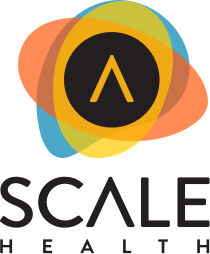Government relations and political professionals have an insatiable appetite to utilize technologically advanced tools for their issue advocacy and political campaigns.
As a result, there has never been a better time for leaders in the tech community to insert themselves into the political debate and figure out how to best mobilize voters, solicit contributions, and cultivate organic grassroots energy.
I have had the luxury of working with some of these innovative companies; visionaries who are defining the convergence between tech and politics.
In addition to working in government relations in Washington, D.C., I am currently the Director of Fundraising and Operations for My Ride to Vote, an organization that funds free Uber and Lyft rides to the polls for voters on Election Day.
In June, My Ride to Vote provided free Uber rides to the polls in the hotly contested GA-06 congressional special election, and serves as the first and only national organization to mobilize voters via rideshares.
Because of my work at the convergence between tech and politics, I have three takeaways for the tech community at-large. Ultimately, each point aims to encourage more tech pioneers to engage in the political process.
There is a race to figure out how to best target and transport voters
Everybody is offering a new solution, but nobody has quite nailed it.
Further, there remains little academic literature on what forms of outreach yield the best results for voter targeting and mobilization. Simply put, whoever can figure out how to better target and communicate with prospective supporters will be incredibly successful.
In addition, a platform that offers either a service or an app to get more voters to the polls will be widely sought after.
Take Hustle, for example, formed in 2014. Hustle’s outbound-text platform allows its users to have thousands of personalized text conversations simultaneously. This has changed the way campaigns target advocates, voters, and donors (especially millennials).
In just a few short years, Hustle scaled up and was implemented by both the Bernie Sanders and Hillary Clinton campaigns, and was a major contributor to Bernie’s grassroots uprising.
On the issue advocacy side, Phone2Action is a similar story. Via email, text, and social media broadcasting, this new platform makes it simple for advocates to email, call, tweet, or Facebook their elected officials at the local, state, and federal level.
As a result, Phone2Action is working with some of the biggest industry and advocacy organizations across the country, including the American Heart Association and Association of Young Americans.
Crowdfunding is becoming a prominent method of political fundraising
As our social and civic communities become increasingly intertwined, crowdfunding through social media is now a prominent method for campaign fundraising.
If a campaign can organically generate some buzz, companies like CrowdPAC can blast messages to anyone who contributed through their platform, giving the campaign a unique and legal way to expand their coalition of advocates. (Read more about celebrities, crowdfunding, and political participation in my recent Huffpost piece).
Ultimately, there is more room for innovative platforms to capitalize on Americans’ increasing engagement on social media platforms to amplify political and issue campaign fundraising.
Technology in politics is sexy
It sells! For example, My Ride to Vote successfully fundraised nearly $500,000 online in 2016 for the Presidential Election. Further, the organization generated serious media traction, and was featured in the Wall Street Journal, Atlanta-Journal Constitution, and The Hill in 2017.
Primarily, MRTV’s supporters engage because they think access to the ballot box is important and wish to play a role in mobilizing voters.
However, a big piece to MRTV’s appeal, specifically with the younger generation, is that the organization is implementing innovative methods to do so.
In other words, Americans are intrigued by the convergence between tech and politics. Naturally, any tech platform that attempts to get more people to participate in the political process will be starting from a position of leverage.
It sounds cliché, but technology really is changing our political landscape.
Campaigns are becoming increasingly open-minded to test new platforms because advocates, voters, and donors are receptive to this change. As we gear up for 2018, I strongly encourage ScaleLA members to employ their talents in the political arena.
Director of Fundraising, My Ride To Vote





